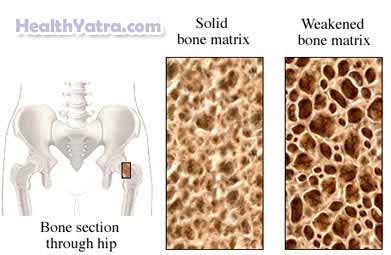সংজ্ঞা
Dual energy X-ray absorptiometry (DEXA) is a test that measures the density (or thickness) of your bones.
The DEXA scan is an x-ray scan that uses a small amount of radiation to take pictures of different bones. These pictures are used to measure the density of the bones at the spine, hip, forearm. It can also take pictures of other bones such as a finger or the heel bone. Measurements of the spine and hip are called central DXA. Those done on the arms or legs are called peripheral DXA. In some cases, your doctor may order a whole body scan.
পরীক্ষার কারণ
This test will help your doctor assess the density of your bones. It will help determine if you have osteoporosis, a bone-thinning disease. This information may be used to predict your risk of bone fractures.

সম্ভাব্য জটিলতা
An x-ray uses radiation to make images. The low levels of radiation from a single x-ray will not effect most people. If you are pregnant or think you may be pregnant talk to your doctor before the x-ray. Radiation may be harmful to developing babies.
কি আশা করা যায়
পরীক্ষার আগে
- Eat normally on the day of the test.
- Wait up to two weeks before having a DEXA scan if you have had a barium study or if you have been injected with contrast dye for a CT scan or MRI.
- Wear loose, comfortable clothing. Do not wear clothing with metal zippers, belts, or buttons.
- If there is any possibility that you are pregnant, let the staff know.
পরীক্ষার বর্ণনা
Central DXA
Central DXA measures bone density in the hip and spine. You will be asked to lie on a table. Your position will depend on the area being examined. You will be asked to hold still and may be asked to hold your breath while the X-ray is taken. The X-ray will be taken and sent to a computer monitor.
Peripheral DXA
Peripheral DXA measures bone density in the finger, hand, forearm, or foot. The area being examined will be placed in a small device. The device will provide a bone density reading in a few minutes.
পরীক্ষার পর
পরীক্ষা শেষ হলে আপনি চলে যেতে পারবেন।
কতক্ষণ এটা লাগবে?
About 10 minutes
এটা আঘাত করবে?
না
ফলাফল
The test results are usually available within a few days. Your test results will show two types of scores:
- T score—This number shows the amount of bone you have in comparison to a young adult of the same gender with peak bone mass. A score above -1 is considered normal. A score between -1 and -2.5 may mean you have osteopenia, the first stage of bone loss. A score below -2.5 means you may have osteoporosis.
- Z score—This number shows the amount of bone you have in comparison to other people of your age group, gender, and race.
These test results will help your doctor determine your risk for bone fractures.
আপনার ডাক্তারকে কল করুন
Call your doctor if you have any questions about your condition, the test, or your test results.
